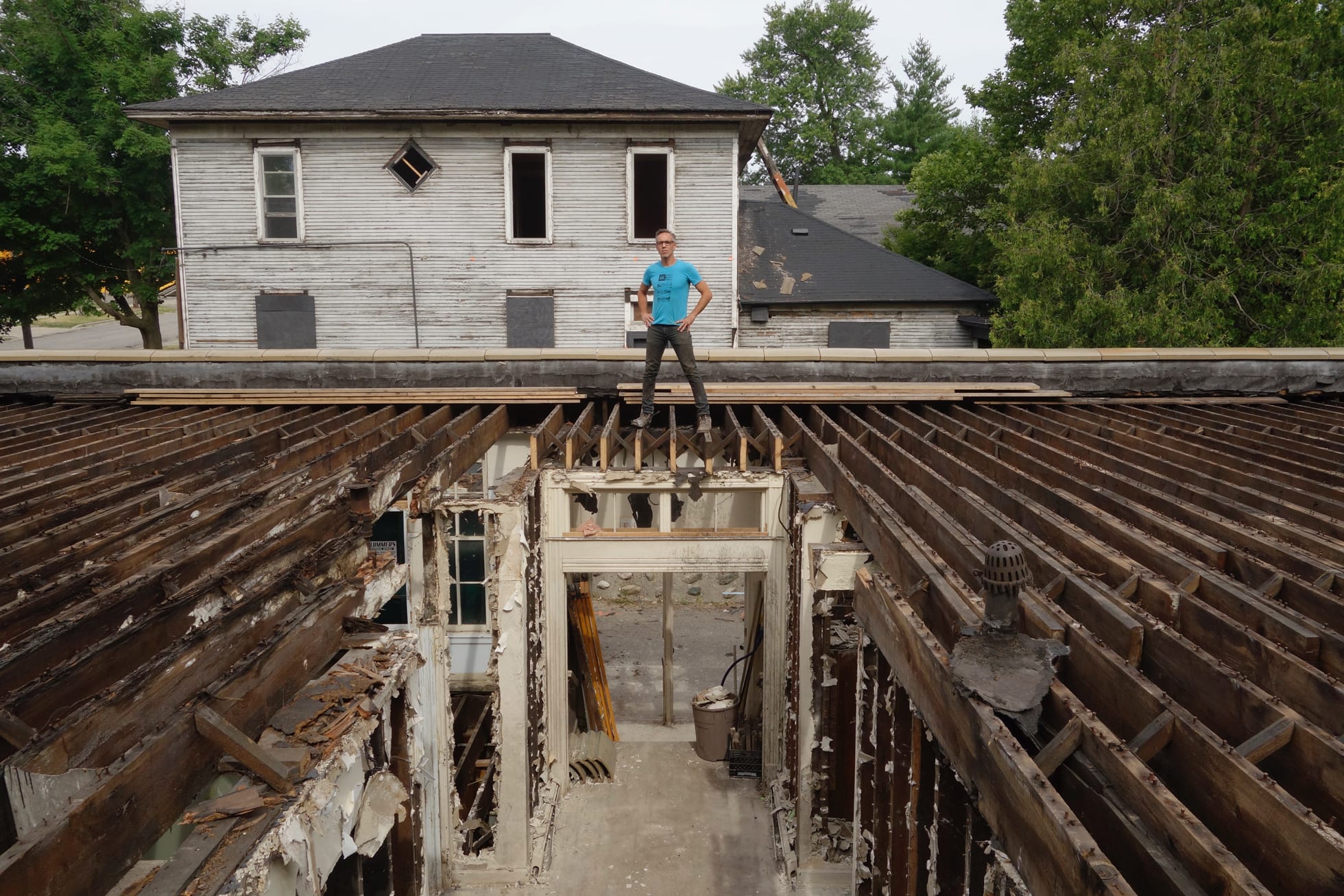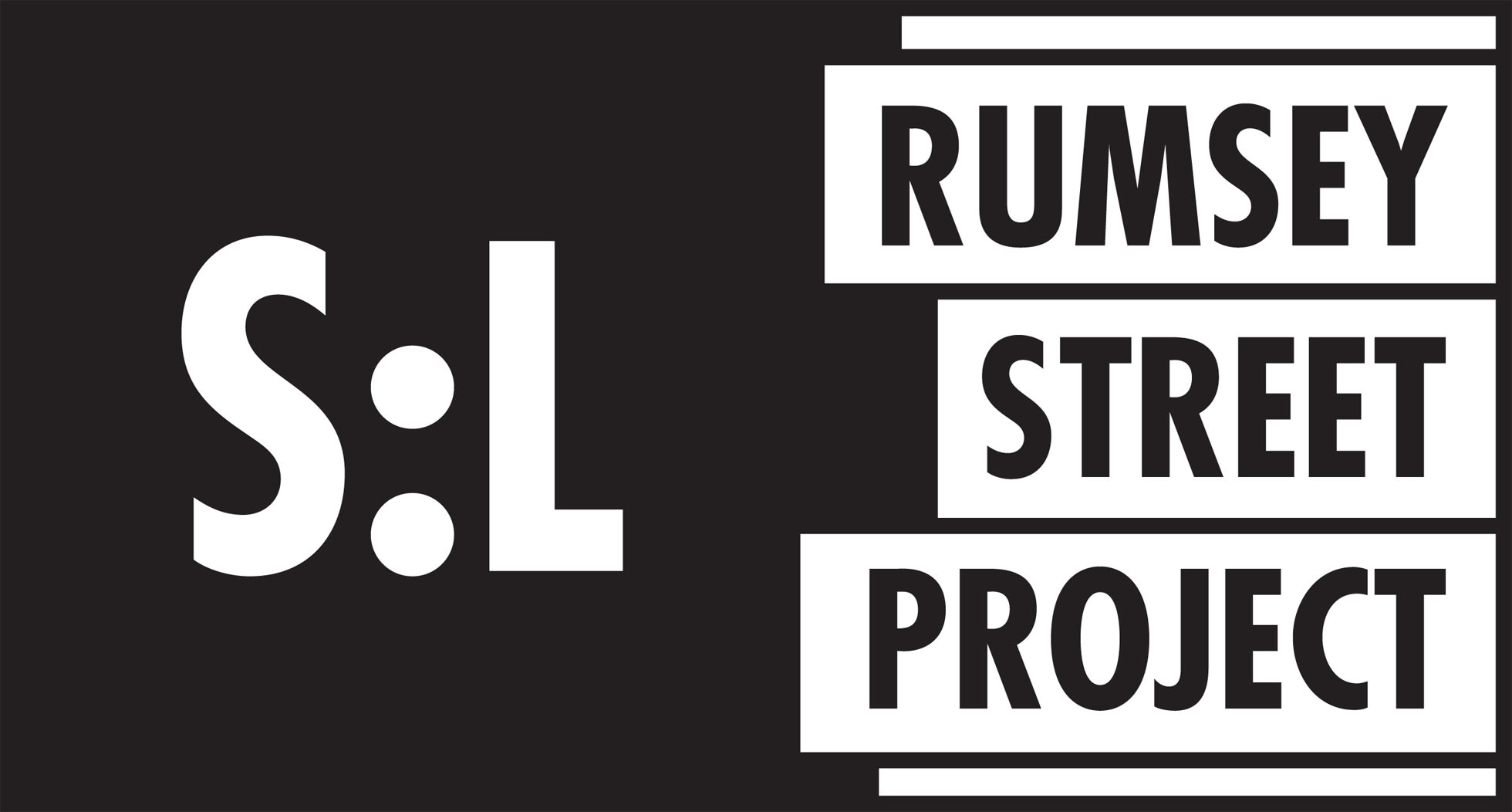
As the curator and co-founder, with Tom Clinton, of the Grand Rapids-based nonprofit organization SiTE:LAB, Paul Amenta (MFA 2000 Fine Arts) is at the center of an unusual and growing contemporary art scene in Michigan’s second-largest city. SiTE:LAB unites artists and communities through the creation of temporary, site-specific art installations, opening up avenues for collaboration among art-makers and the local cultural, educational and business associations.
After receiving his BFA in fine arts from Grand Valley State University in Michigan, Amenta moved to Seattle to work as an assistant for the installation artist Beliz Brother and was inspired to begin focusing on his own site-specific work for architectural spaces. From Seattle, Amenta moved to New York City, where he enrolled at SVA. In 2006, after a few years in New York, Amenta returned to Grand Rapids, his hometown, where, in 2010, he established SiTE:LAB. Through his work with the organization, he has brought such artists as Kate Gilmore (MFA 2002 Fine Arts), Daniel Rothbart and Mark Dean Veca to the area, where they have, respectively, painted a house bright pink and held daily performances inside, covered an abandoned auto-body shop with vibrant murals, and cut a hole in a building’s ceiling to create an oculus.
In September, SiTE:LAB once again took part in the annual three-week art event and competition ArtPrize, which attracts hundreds of thousands of visitors to the Grand Rapids area. SiTE:LAB has cemented itself as an important part of ArtPrize, having been named “Outstanding Venue” by the event’s jury for five years running. This year, the nonprofit also received a major grant from the National Endowment for the Arts’ Our Town program; the support will go toward sustaining SiTE:LAB’s education initiatives, a crucial component to its community-geared projects.
On Tuesday, October 25, Amenta and Julie Schenkelberg (MFA 2011 Fine Arts) will discuss how to create a sustainable art practice at a talk presented by MFA Fine Arts and Career Development at SVA. Earlier this year, as SiTE:LAB prepared for ArtPrize, Amenta spoke with writer Danielle Whalen (BFA 2013 Visual & Critical Studies) about his organization’s past, present and future. An edited, condensed version of that conversation appears below.

People tend to think of the United States’ “art world” as being restricted to New York, Los Angeles and, to an extent, Chicago. Where does Grand Rapids fit in?
There are several college and university programs that energize art activity here, with the main scene being led by a “do-it-yourself” mentality. The big difference between Grand Rapids and a place like New York or L.A. is that there is a lack of commercial gallery activity here. As a result, people do their own thing—there are a lot of small, pop-up galleries, and people take it upon themselves to make things happen, and to will a community into existence.
Then there’s ArtPrize, which began eight years ago. It has created a platform for some of the things that had already been happening to become bigger and more focused. The city transforms for three weeks and suddenly has the energy of a much larger city.
How did you come to found SiTE:LAB?
It all stemmed from a sculpture class I was teaching at Kendall College of Art and Design, in Grand Rapids. It was my second semester there and I realized the students weren’t really engaged with anything outside of the institution, so I would set up trips to museums and introduce them to artists beyond the college. Then I thought it would be interesting if they developed their own exhibition. I found a site and organized a show of undergraduate sculptors, putting the students in charge of every stage of the process. Nearly 500 people came to the opening, and they kept coming up to me asking when the next show was. They were clearly hungry for this type of activity. After that, I was doing two to three projects a year, first with students, then at an organization called ACTIVESITE, and finally with SiTE:LAB.
In 2009, ArtPrize was announced, and this gave me an opportunity to tweak what we were doing. One thing that I thought was missing here was exhibitions of challenging work by artists from outside the community. So I reached out to artists to come to Grand Rapids and do these big, crazy projects that had a real collaborative spirit.
Can you talk a bit about SiTE:LAB’s current effort, the Rumsey Street Project?
About a year and a half ago Habitat for Humanity contacted SiTE:LAB and invited us to use three acres of rundown property they had bought and were planning to redevelop. The result is the Rumsey Street Project.
Rumsey Street consists of abandoned buildings, most of them houses, although there’s also a small church and an auto-body shop. Habitat for Humanity had purchased it and wasn’t planning to start construction until 2017. They asked if we would be interested in occupying the site for two years. We took a tour and I immediately said, “Yes, let’s do it,” without really thinking about the complexity of the project. It was just a great opportunity.
After that, we started working extremely hard to understand the neighborhood. We wanted to make sure we were good neighbors, since we would be there so long. We began going to neighborhood meetings and having Habitat introduce us to key community players. In the past, we'd come in to a location, do our thing, and move on. With this project, we really felt like we needed to do our due diligence and integrate ourselves into the community to make people feel comfortable with us being there.
Because all of the buildings on Rumsey Street will be torn down as part of Habitat’s redevelopment, we have a lot of leeway with what can be done in these structures. I’m able to offer an artist an entire building to do whatever they want.
Last year, the projects were very ambitious and labor-intensive, yet somehow we were able to pull it off. We’re an all-volunteer organization, with no paid staff. We do it out of love and dedication.

What are you planning for Rumsey Street this fall when ArtPrize returns?
We’ve got a number of interesting collaborations planned, including ones with the Grand Rapids Art Museum, the Meijer Gardens and Sculpture Park, and a local organization called DisArt, which advocates for people with disabilities to have greater access to art and art-making. We’re also working with the Gordon Matta-Clark estate, which is allowing us to show some of his films in mini-theaters that we’ve set up in the auto-body shop.
Going back to SiTE:LAB’s community outreach—since you’re returning to Rumsey Street for a second year, I assume the reception from locals to last fall ’s shows was positive and no group was against you coming back again?
We would have listened if that had been the case! What I’ve found to be even more helpful than attending community meetings is simply our being present there. This was a totally abandoned street—all the streetlights were turned off. Now I’m there almost every day working on something, whether it’s cleaning a house or working on a lawn, and people walk down the street and say hello. To me, that’s been the most compelling thing. When we first arrived, you didn’t see anybody walking down that street, whereas now there are kids playing soccer in one of the open lots and mothers pushing strollers down the sidewalks, even at night. I know most of the locals, or am at least on a waving basis with them. They probably think, “There’s that crazy guy again, painting a house pink!”
Just another day in the neighborhood. . . .
Exactly! So there’s been a transformation. We got all the lights turned back on, and people feel safer. Some of the early meetings were interesting because we were anticipating some pushback. During one meeting, there was a woman who clearly had something she wanted to say. She waited until the end to speak and stood up and began, “I’ve been biting my tongue this entire evening. . . .” I looked over to my partner, Tom Clinton, and we both expected a tongue-lashing, but instead she said, “I just want to thank you guys for bringing ArtPrize into our community.” They really welcomed us. I’m sure there are people with reservations, or who aren’t interested in contemporary art, but because it’s a Habitat project it’s all been very positive. If this had been some developer coming in to build condos, we never would have done this.
Our community outreach has also led to responses that have given even deeper meaning to some of the artists’ projects. For instance, the church on the property used to be for a Catholic congregation. They actually outgrew the structure and had to move to a larger building a bit farther away. We brought in Nick Kline, who is predominantly a photographer but created a piece where he painted the exterior of the church in stripes. Every day, people would come up and tell stories about their memories of the church, such as, “My son was baptized here” or, “I was married here.” You could tell that people had a strong emotional connection to the place, and not just in a nostalgic way. We all have feelings of nostalgia for houses we’ve lived in or areas in which we grew up, but there was something more going on here. People missed that church, even if they attended the new, bigger and better one. It’s so interesting that it took this art project to reveal that.
Danielle Whalen is market editor at Art + Auction and writes for Modern Painters and Blouin Artinfo. A version of this article appears in the fall 2016 issue of Visual Arts Journal.

